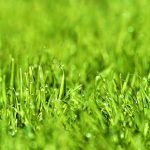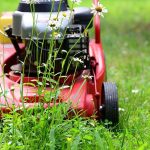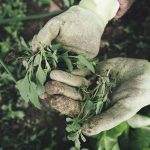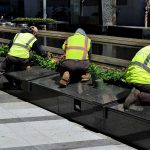Roswell GA Fescue Benefits From Aeration During Fall
Most homeowners regularly overlook issues associated with soil compaction. Nematodes, diseases, insects, lack of fertilizer and improper watering are often held liable for the deterioration of a Roswell GA lawn while the real culprit is often compaction.
Avoid Soil Compaction In Fescue Turf Grasses
The real problem often starts when the top 4” of the soil are compressed by different things, limiting the movement of water, air and nutrients to grass roots. This in turn ends up stressing the plants, leaving them unable to compete with things like weeds and slowing their ability to recuperate from injury. Over time, a compacted lawn will need renovation.
Soil that is compacted contributes greatly in the accumulation of thatch as the levels of oxygen are greatly restricted in such soils, impairing the activity of thatch decomposing organisms like earthworms and such. If not taken care of, thatch may lead to serious pest and maintenance problems.
It is important to understand that thatch accumulates much faster in compacted and heavy clay soils than on well aerified soils. As such, some lawns will need to be frequently aerified to aid manage thatch accumulation.
If your lawn soil is compacted, then the solution to rectify this is pretty simple and straightforward – aerify it. The process of physically digging up cores of soil, leaving cavities or holes in the lawn is what is defined as core aerification or aeration.
The 5 Benefits of Core Aeration In Roswell Ga
• It loosens the compacted soil, increasing the availability of nutrients and water.
• Core aeration improves oxygen levels in the compacted soil, enhancing the activities of thatch decomposing organisms and stimulating root growth.
• While removing soil cores, the tines or spoons used normally sever rhizomes, stolons and roots. Grass plants are therefore stimulated to produce new roots and shoots that end up filling up the holes in your lawn, increasing the density of your turf.
• It moderates water runoff.
• It improves your Roswell lawn’s drought tolerance while improving its overall health.
Timing Of Cool Season Or Warm Season Turf Grasses
The turf grass type you have planted will determine whether you’ll aerify your lawn in the summer or during fall.
Lawns that are composed of cool season grasses like tall fescue and Kentucky bluegrass are best aerified during fall when there is lesser heat stress and risk of invasion by weedy annuals. It is important that you allow about 4 weeks of good growing weather so that your plant can recover.
Warm season grasses like carpetgrass, centipedegrass, St. Augustinegrass, bermudagrass and zoysiagrass are best aerified in the summer or late spring when they are growing actively. For any type of grass, it is important that you choose a day when the temperatures are milder and the soil is moderately mist, making the soil much easier to penetrate.
It is important that you avoid aerifying wet soil as it is messier and could lead to further compaction of the soil. If the core sample you are working on sticks to the probe or the soil easily sticks to your shoes, it is important that you wait till it dries out before you start working on the lawn.
The aerification of lawns helps correct soil problems; however, this should not be a routine practice. You might be asking “how often should one aerify their lawn?” The answer to this question is as often as required.
One way to know if your lawn needs aeration is be scouting your lawn. Use a screwdriver to probe the soil. If your screwdriver penetrates through the soil with little to no resistance, then you really don’t need to aerify. If it is really hard to penetrate your soil with your screwdriver, then you probably will have to think about aerifying. Ensure that the soil is moist when doing the test as dry soil could be very hard to penetrate.
Turfgrass in very high traffic areas will generally need to aerified more often than in other areas of your lawn. Turfgrasses that have low traffic tolerance such as the St. Augustinegrass and centipedegrass may need aerifying often than ones with good traffic tolerance like zoysiagrass and bermudagrass. High traffic areas can usually be worked on using your hands only as described below.
Soil Compaction In Small Lawn Areas
Aerification is not that expensive. The cheapest and simplest way to aerify small lawns is by using a spading fork. Do this by pushing the tines into the soil as deep down as you can – at least 4” – before rocking the fork back and forth to make the holes larger. The movement loosens the soil, making room for new grass roots to sprout. However, there is one limitation that comes with using a spading fork is that while you are making a hole, you also are forcing soil particles around the hole to come closer together, causing even more compaction. The flipside of this approach is that it is rather labor-intensive when working on larger areas.
For a couple of dollars, you can buy a sod-coring tool, which does a far better job. Just like the spading fork, the sod-coring tool is easy to use and is ideal for use on small patches. However, unlike your fork, the tool removes soil cores from your lawn instead of pushing all the soil aside to create holes. The earthen plugs deposited on the lawn after each plunge actually benefits the lawn as they contain microorganisms which help in the decomposition of any thatch present.
Aerating Large Turf Grass Areas
Aerifying large lawns normally requires power-driven core aerifiers or aerators that can be rented at a garden and lawn supply centers. The working parts of such machines as these are hollow tubes or spoon-shaped tines. As the tubes or tines are driven into the lawn, soil cores are removed from the ground and are strewn all across the lawn. Both tine types work equally well; however, the hollow tines make a cleaner hole than the spoon type and raises lesser soil. The tine-size varies up to 3/4” and a penetration of up to 3”, depending on your manufacturer’s specifications. Closer tine placement helps remove more soil, exposing more soil surface for fertilizer and water movement while alleviating compaction much faster than wider tine spacers.
Penetration deepness will be determined by tine diameter, soil moisture, soil type and the power and weight of your aerifier. It is advisable that you leave soil cores on the lawn to allow it to be broken down by traffic and rainfall. No matter which machine you are using, it is important that you go over your lawn twice, once in one direction before going in the perpendicular direction for the best results.
Aerifying and Reseeding Roswell Georgia Lawns
You can combine aerification with seeding, especially on bare or sparse areas. If you are considering seeding your lawn, it is important that you make 6 to 10 passes over the same area with your machine. You need to come up with a specific number of holes that are at least 4” apart, improving the density and appearance of the stand.
Give these holes a month to heal before seeding. If you over-seed immediately after coring, seeds landing in or near the aerifying holes will germinate and grow better than those in between the holes, giving your lawn an uneven and speckled appearance. Using a fraction of the expense and effort of tilling up an entire area, combining aerification and seeding will give your lawn a brand new look.
To learn more lawn care tips follow our blog or contact us today.







